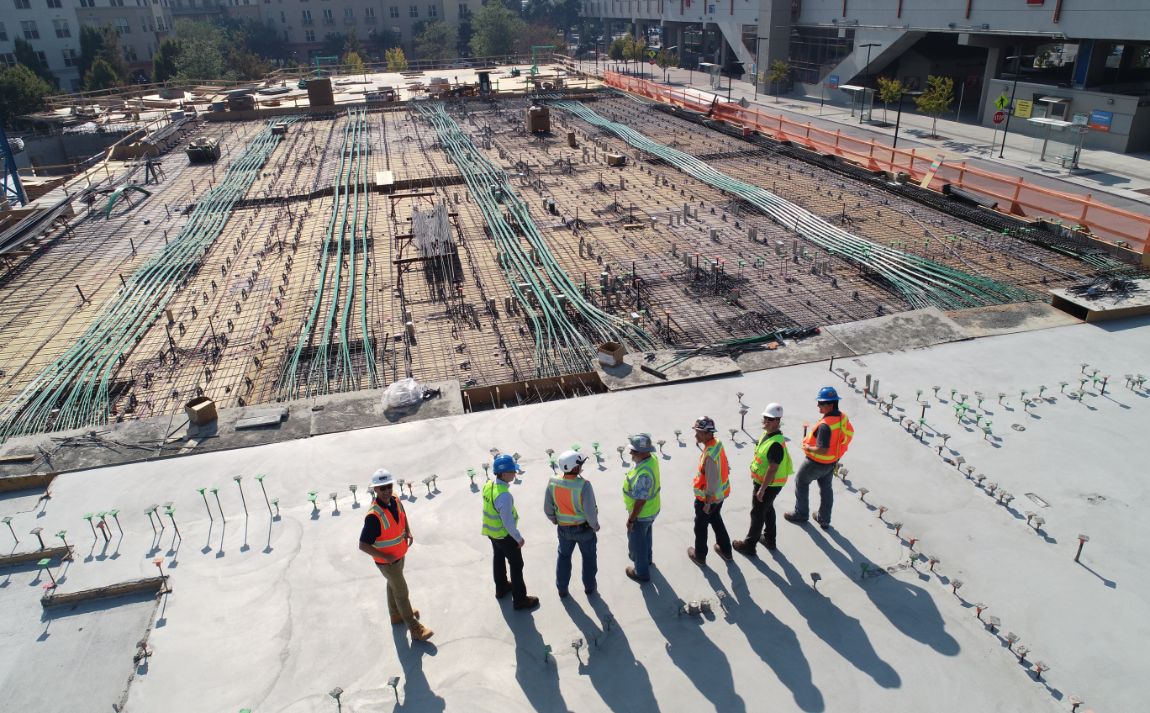Réduire mon impact
Construction and public works: how to achieve carbon neutrality?


Carbon neutrality is probably one of the government's key ecological objectives. The building and civil engineering sector is particularly concerned, since the construction industry is responsible for over 40% of France's greenhouse gas emissions. Contributing to carbon neutrality is no mean feat, however. Recent measures such as RE 2020 (Réglementation Environnementale 2020), PEP ecopassport® (international program for declaring the environmental impact of electrical products) and EPR (Extended Producer Responsibility) are all ways of contributing to a significant reduction in CO2 emissions in the construction sector. Let's open up the prospects for a less polluting world.
What is carbon neutrality?
First of all, we need to define carbon neutrality. Quite simply, it means reducing greenhouse gas emissions as far as possible, and absorbing any residual emissions through offsetting projects, in order to limit the harmful effects of pollution on the environment and the climate.
For many years now, climate change has been becoming increasingly recurrent, and is indicative of climate disruption caused by (suggestion: an increase in greenhouse gas emissions) increased pollution of the atmosphere, oceans and plants.
The building and public works sector is particularly concerned, since the construction of buildings, as well as the consumption they generate over their entire lifespan, are responsible for 43% of CO2 emissions in France.
In this respect, the French National Low Carbon Strategy (Stratégie Nationale Bas Carbone - SNBC) envisages almost total decarbonization of the transport, energy and construction sectors by 2050. It goes without saying, then, that things need to speed up, and radical solutions need to be put in place if we are to achieve this goal.
This is the line taken by the RE 2020, which sets high ambitions in terms of decarbonization. From 2022 onwards, new buildings will have to comply with very strict energy consumption specifications.
Builders must also rethink the way they operate on construction sites, giving priority to sustainable materials and drastically reducing their energy consumption.
With regard to materials, two mechanisms are also in place to ensure that producers assume their responsibilities: EPR and ecopassport® PEPs.

RE 2020 to decarbonize the construction industry
The RE 2020 is probably the most promising way to decarbonize the building sector in France.
The main aim of this new environmental regulation is to see the construction of new carbon-neutral buildings, so as to achieve near-zero CO2 emissions by 2050.
The aim is to progressively transform construction techniques towards sustainable buildings that consume almost no energy, both during the construction phase and throughout their life cycle.
For this reason, insulation is one of the key points of RE 2020: new buildings will be built using materials that meet the Bbio indicator. Solutions must be put in place to ensure optimal summer comfort for residents, without increasing greenhouse gas emissions.
The RE 2020 directive involves both builders and manufacturers, who must design more and more products in line with the new environmental requirements.
One thing is certain: implementing and complying with RE 2020 is essential if the construction industry is to contribute to carbon neutrality.
EPR regulations that manufacturers must comply with
For manufacturers such as Nexans, solutions are becoming more and more widely available to better handle the end-of-life of products, by recycling them appropriately. These solutions are also designed to better identify and trace energy consumption and CO2 emissions throughout the product's life cycle.
Extended Producer Responsibility (EPR) has only recently been introduced in the construction and public works sector, and it has come at just the right time with the RE 2020 directive. Producers of building materials and products will have to join eco-organizations to pay them an eco-contribution that will finance waste treatment, to ensure recycling wherever possible.
PEP and eco-design, solutions that Nexans implements to help installers in their CSR approach
Ecopassport® PEPs draw up the environmental profile of products: PEP sheets are based on a product's life cycle to calculate its environmental footprint, from manufacture to end-of-life.
In addition to simply providing transparency on the environmental footprint of products used in the construction and public works sector, PEP is also a way for manufacturers to initiate an eco-design process, in order to design products with a better environmental "score".
These schemes enable manufacturers to analyze and assess the environmental impact of their products, and thus encourage them to design and manufacture materials that are more respectful of the environment, in order to play an active part in decarbonizing the construction sector.
PEP is based on :
- a recognized methodology, based on ISO 14040 standards, which define the principle, framework, requirements and guidelines for good LCA practice;
- product category rules based on ISO 14025, defined jointly with other manufacturers of electrical and electronic equipment;
- an internationally-recognized LCA calculation methodology (CML), whose indicators, in line with EN15804 standards, include 9 environmental indicators (including global warming, resource depletion, water and air pollution) and 18 indicators for monitoring energy, water and waste consumption, etc.
These materials can then be reused to manufacture new products with a much lower environmental impact: this is one of the principles of an eco-design approach.
Eco-design enables more positive indicators to be included in PEPs, thanks to a Life Cycle Assessment (LCA) which leads to actions to reduce a product's carbon footprint.
The aim of all these actions is to create eco-circularity to revalue materials, but also to avoid black markets. A number of start-ups are entering this highly promising low-carbon construction market. One example is Backacia, a French company that buys and sells surplus or deconstruction materials. This solution enables materials to be reused in a practical way, preventing them from becoming waste.
Find out more:
